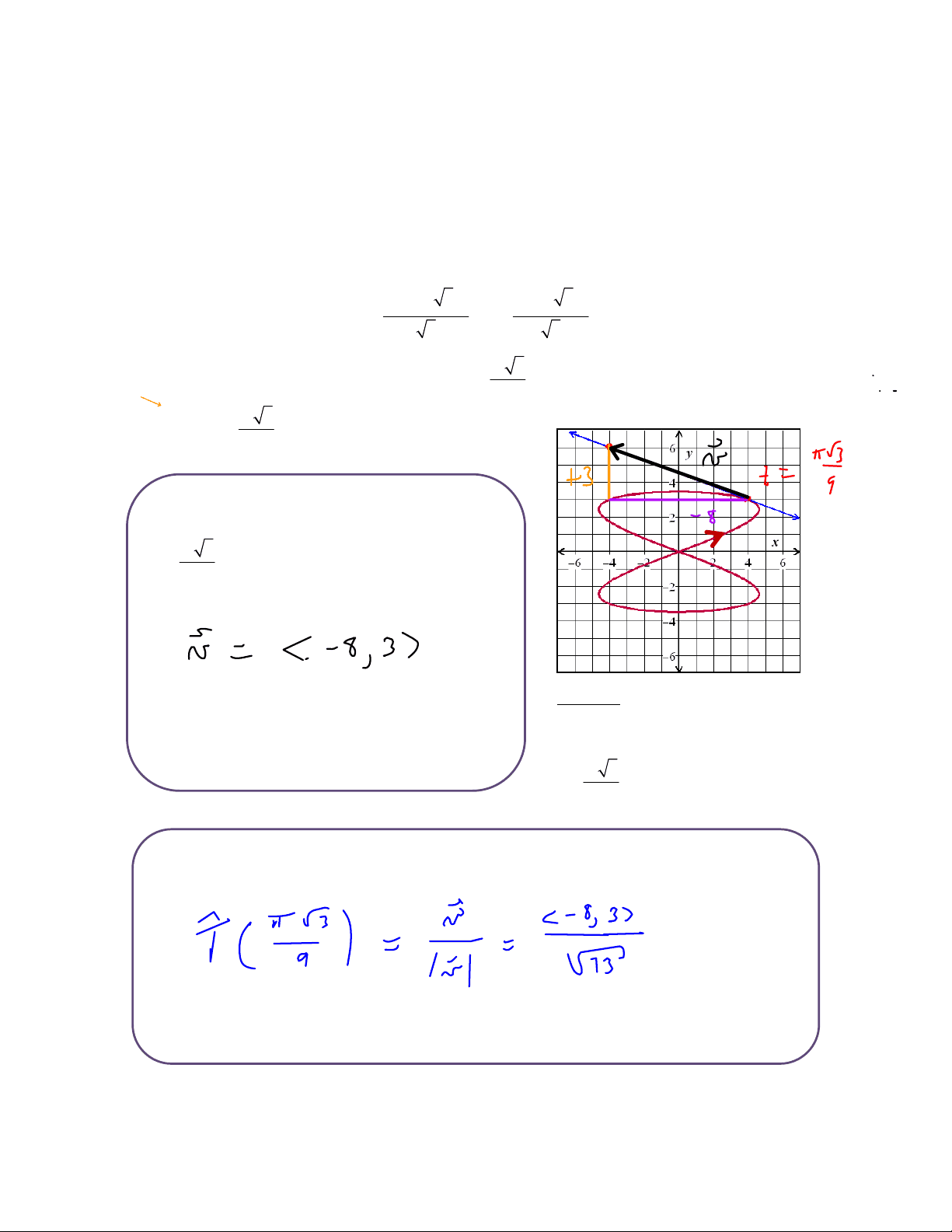
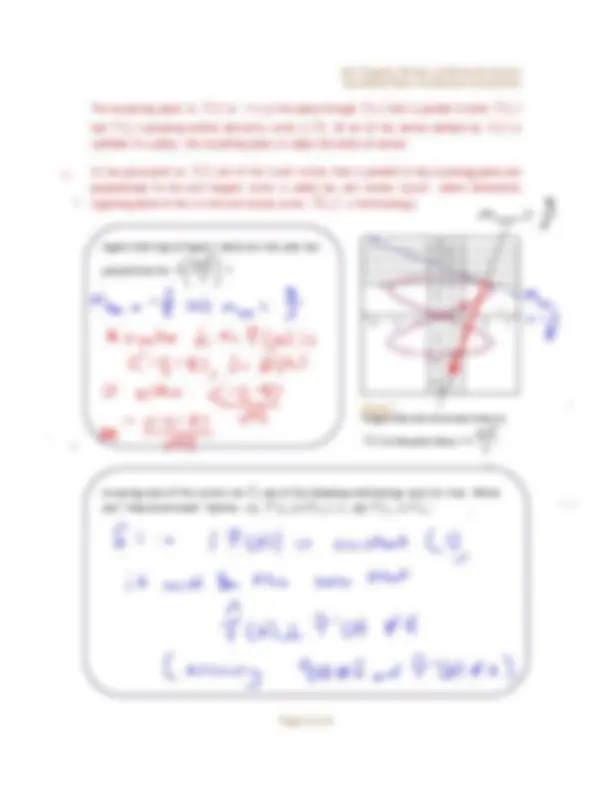

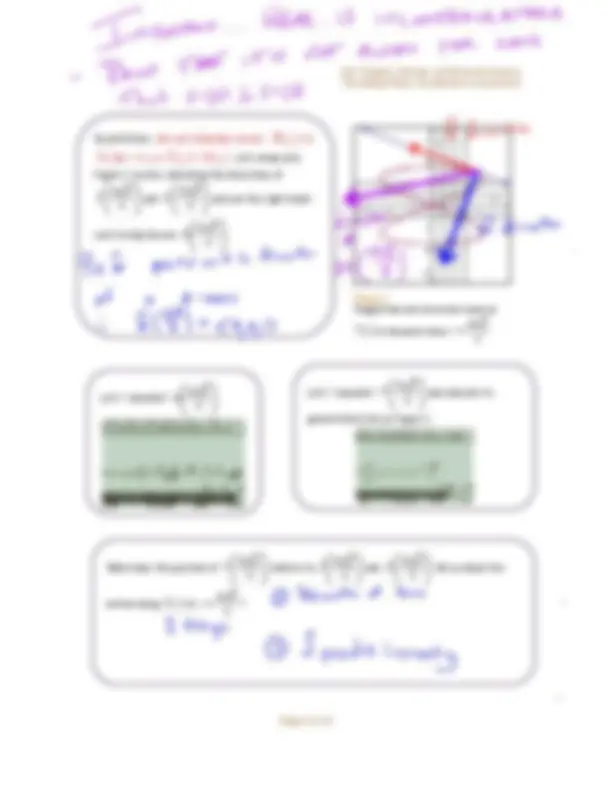
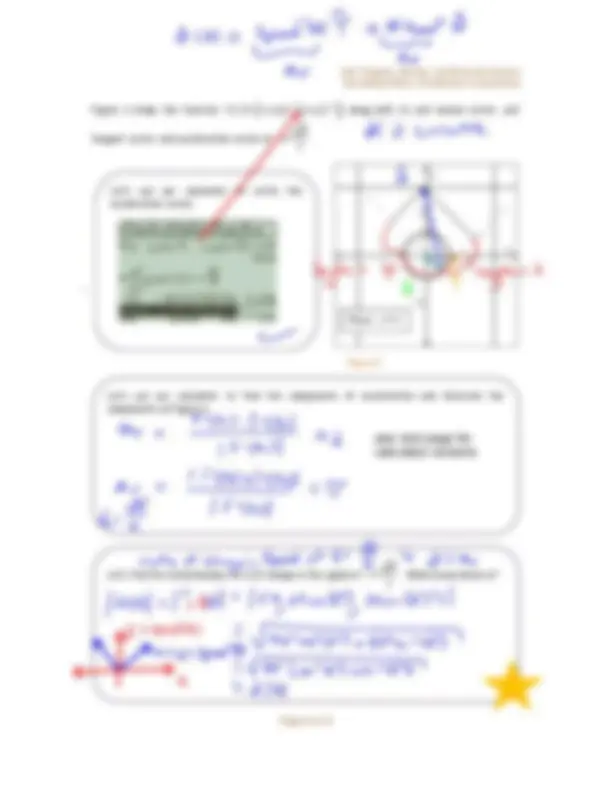
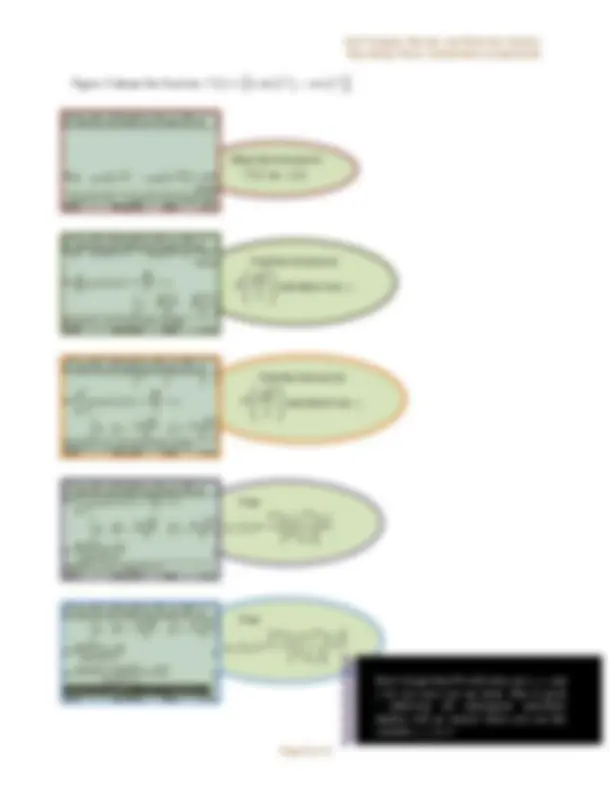
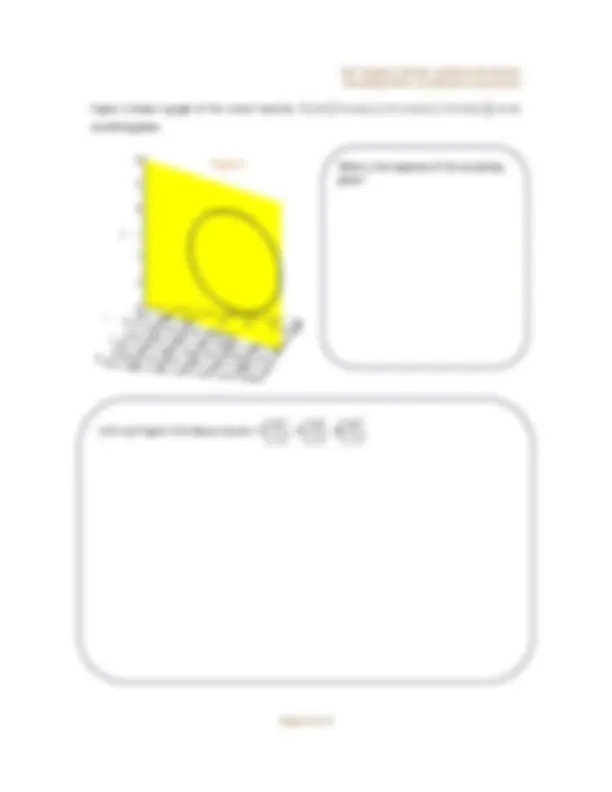


Study with the several resources on Docsity

Earn points by helping other students or get them with a premium plan


Prepare for your exams
Study with the several resources on Docsity

Earn points to download
Earn points by helping other students or get them with a premium plan
Community
Ask the community for help and clear up your study doubts
Discover the best universities in your country according to Docsity users
Free resources
Download our free guides on studying techniques, anxiety management strategies, and thesis advice from Docsity tutors
Material Type: Notes; Class: Vector Calculus I; Subject: Math; University: Portland Community College; Term: Fall 2007;
Typology: Study notes
1 / 11

This page cannot be seen from the preview
Don't miss anything!







Osculating Plane, Acceleration components
as describing a particle moving along a curve, then the unit
when 0
t = t is the unit vector that points in the precise
direction the particle is moving at 0
0
T t This idea is most easily
understood when the motion is confined to a plane.
8sin 2 3 6sin 3
t t
r t i j
is shown in Figure 1. The
tangent line to the curve at the point where
t
= is also shown. Let’s use the figure to
determine
π
.
Now we need to normalize our direction vector.
The first thing we must determine is any vector
that points in the direction of motion at
t
Figure 1
Tangent line and unit normal
at the point where
t
π
Osculating Plane, Acceleration components
t t
r t i j
to determine
.
Let’s be brave and do so by hand.
The first thing we must determine is any vector that points in the direction of motion at
t
Now we need to normalize our direction vector.
Osculating Plane, Acceleration components
( )
( )
( )
0
0
0
; i.e. (^) ( ) 0
vector in the same direction as ( ) 0
( )
( )
( )
0
0
0
; i.e. (^) ( ) 0
vector in the same direction as (^) ( ) 0
Find
⎛ (^) π ⎞
.
Store the formula for
r (^) ( ) t
as y (^) ( t (^) ).
Find the formula for (^) ( )
and store is as z t ( (^) ).
Verify the formula for (^) ( )
by calculating
π
.
Find
⎛ (^) π ⎞
.
By definition, (^) ( )
( )
( )
0
0
0
. Let’s use our calculators to find
π
.
Osculating Plane, Acceleration components
By definition, the unit binormal vector , (^) ( ) 0
B t
, to
r t ( )
at 0
t = t is (^) ( ) ( ) 0 0
T t × N t. Let’s draw onto
Figure 1 vectors indicating the directions of
π
and
⎛ (^) π ⎞
and use the right-hand-
rule to help discern
⎛ (^) π ⎞
.
Figure 1
Tangent line and unit normal vector to
r (^) ( t )
at the point where
t
π
Let’s “calculate”
.
Let’s “calculate”
r
⎛ (^) π ⎞
and indicate its
general direction on Figure 1.
What does the position of
r
⎛ (^) π ⎞
relative to
⎛ (^) π ⎞
and
⎛ (^) π ⎞
tell us about the
motion along r t ( )
at
t
π
Osculating Plane, Acceleration components
Numerically, we quantify the position and effect of the acceleration vector by the tangential and
normal components of acceleration , (^) ( ) T 0
a t and (^) ( ) N 0
a t.
We leave it to the reader to verify that a formula for the tangential component of acceleration is
( )
( ) ( )
( )
0 0
0
0
T
r t r t
a t
r t
and that a formula for the normal component of acceleration is
( )
( ) ( )
( )
0 0
0
0
N
r t r t
a t
r t
.
If (^) ( ) 0
r ′′ t
points in the direction of
this quadrant …
( ) 0
T t
( ) 0
N t
If (^) ( ) 0
r ′′ t
points in the direction of
this quadrant …
If (^) ( ) 0
r ′′ t
points in the
direction of (^) ( ) 0
− T t …
If (^) ( ) 0
r ′′ t
points in the
direction of (^) ( ) 0
N t …
If (^) ( ) 0
r ′′ t
points in the
direction of (^) ( ) 0
T t …
Let’s show that ( ) 0 N
a t = ∀ t for the linear function ( ) 0 0
r t = x + a t y , + b t
.
Osculating Plane, Acceleration components
Figure 2 shows the function (^) ( ) ( ) ( )
2 2
r t = 4, sin t , cos t
along with its unit normal vector, unit
tangent vector, and acceleration vector at
t
Plane: x = 4
Figure 2
Let’s use our calculator to verify the
acceleration vector.
Let’s use our calculator to find the components of acceleration and illustrate the
components on Figure 2.
Let’s find the instantaneous rat e of change in the speed at
t
=. What do we observe?
see next page for
calculator screens
Osculating Plane, Acceleration components
Figure 3 shows a graph of the vector function r (^) ( t (^) ) = 2 + cos (^) ( ) t (^) , 4 + 2 cos (^) ( ) t (^) , 3 +2 sin( ) t
in its
osculating plane.
What is the equation of the osculating
plane?
Let’s use Figure 3 to help us discern
⎛ π⎞
,
⎛ π⎞
,
⎛ π⎞
.
Figure 3
Osculating Plane, Acceleration components
Let’s use our calculator to verify
,
,
.
As we illustrated on Figure 3, the osculating plane to (^) r ( t )
at
t
= is perpendicular to
. Let’s use classic techniques to confirm the equation of the osculating plane.